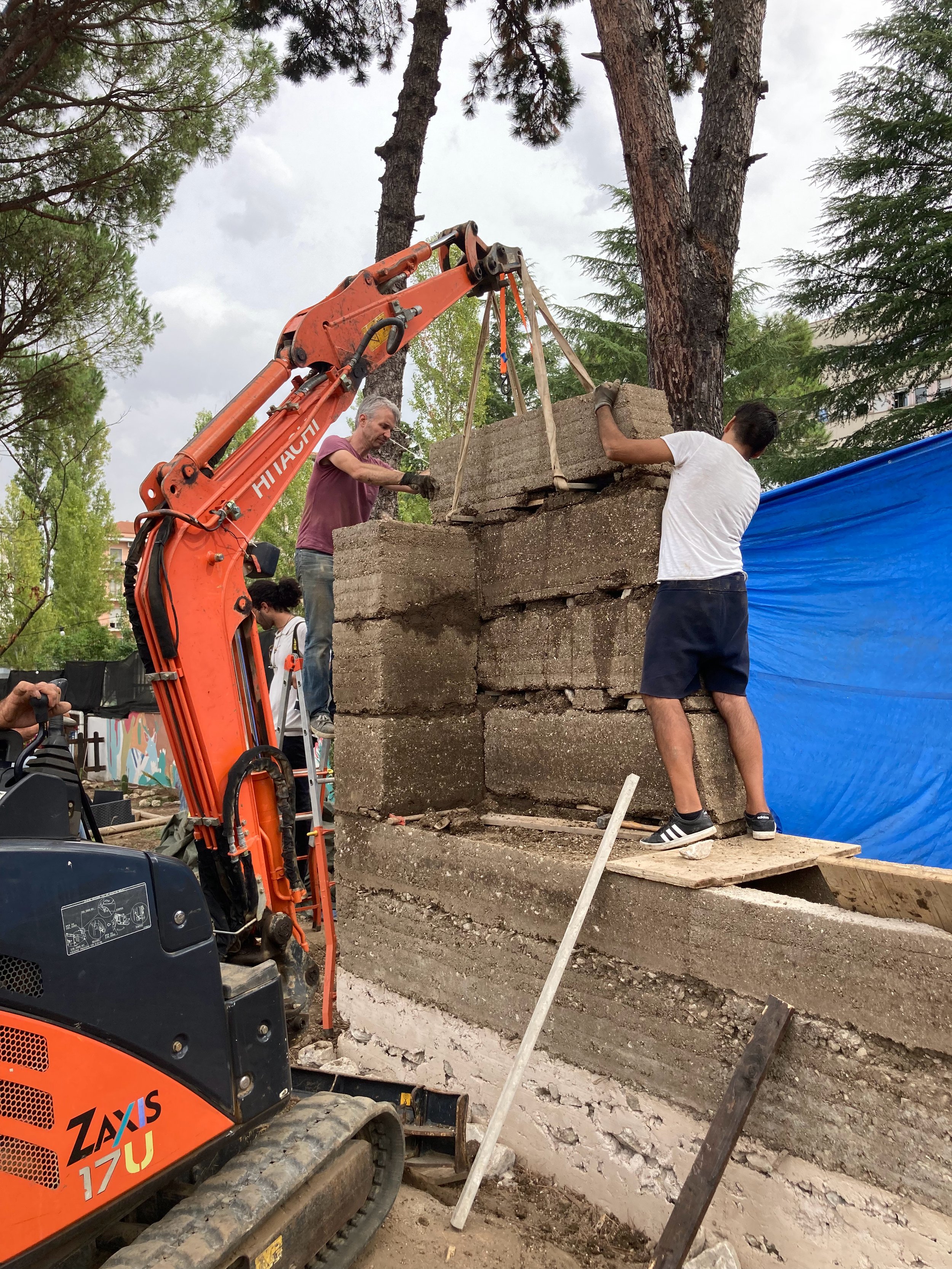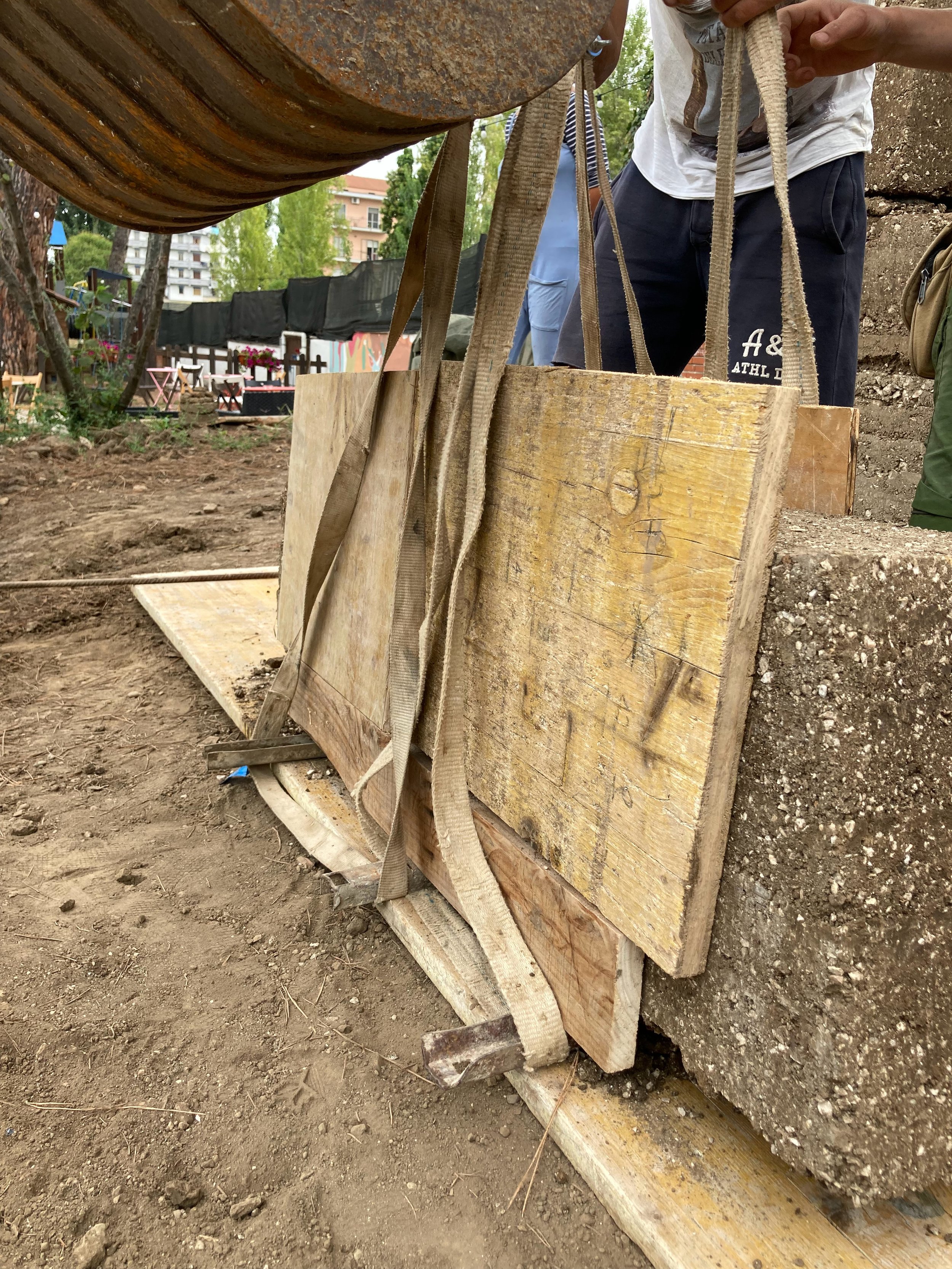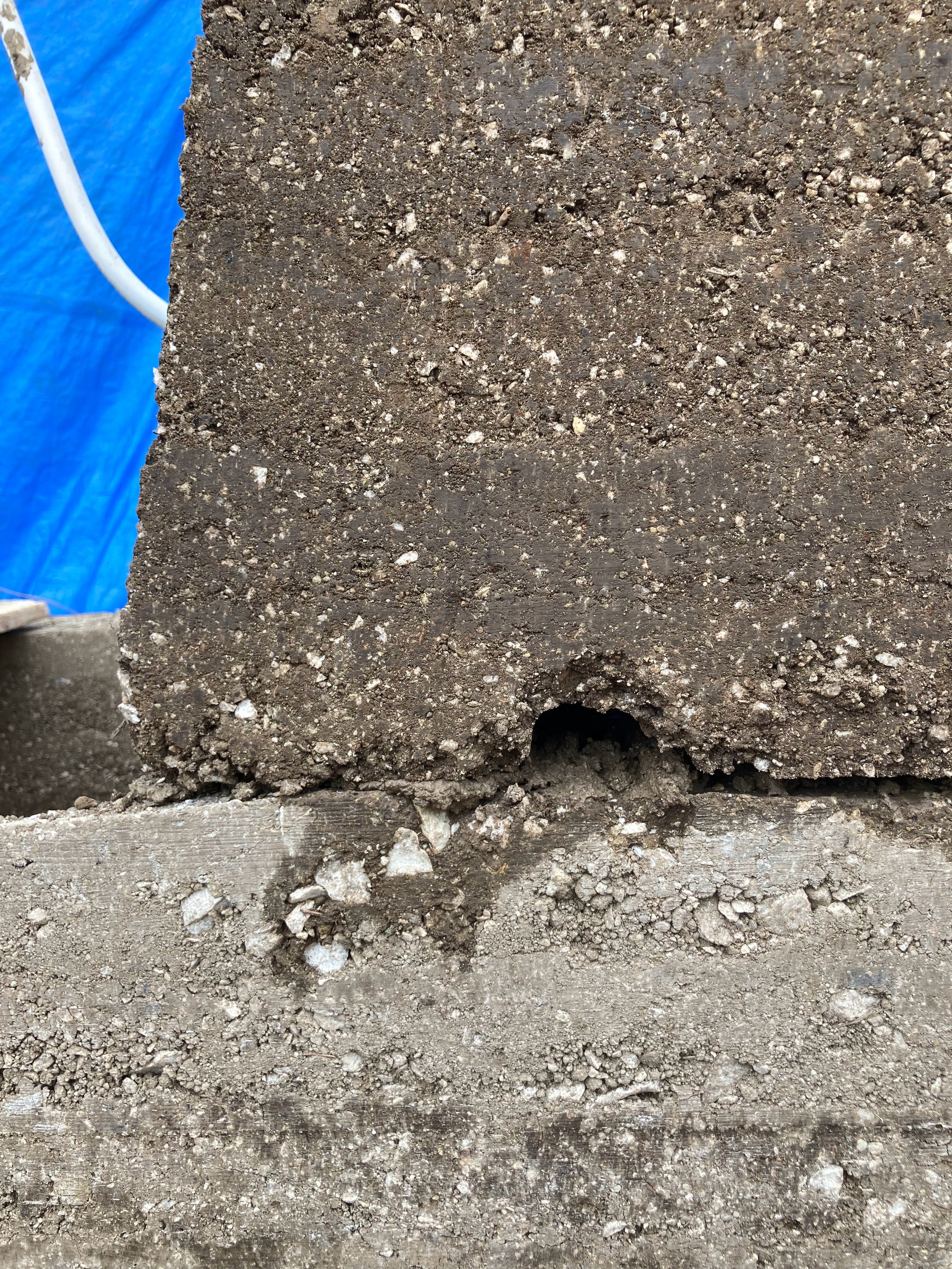Combining self-construction and prefabrication
Rammed earth, as other techniques that use raw earth, is a building technique that requires a high amount of manpower. In the European market, with rather high labour costs, this is a constraint to be aware of. Mechanising some of the executive steps is a possible solution. At the same time, we observe a growing interest in self-building processes which involve users or volunteers who are not fully trained in the building sector but willing to provide help during the realisation process. Can these to aspects be conciliated?
During the LearnBIØN workshop in Benevento, our partners from AK0 decided to investigate into this question. The team designed the fixed furniture facilities for Orto di Casa Betania as a composition rammed earth blocks. The block size varied between 40 x 60 x 40 cm and 40 x 60 x 120 cm. They were thus small enough to be manufactured by hand in a protected area close to the building site. Once ready, a machine, namely a compact excavator, could lift them in place and assemble the structure in just one day.
Working under a roof and at a maximum height of a few centimetres only made the prefabrication process comfortable enough to charge the workshop-trainees and other volunteers directly with the ramming task. Helped by the team of tutors the have also assembled the needed formwork, which was made to measure for the single blocks. The use of non-toxic material with manual tools and the fact that no work at height was needed to prefabricate the blocks also made it simple enough to handle safety issues. The prefabrication process took 12 days.
At a larger scale it is easily imaginable to have a protected prefabrication facility where working is possible also during winter or with challenging wheatear conditions. Most raw earth techniques would otherwise require to interrupt the building process. Mechanizing the assembly makes it easy to concentrate the actual building process in just a few days. According to the project's scale it may be interesting to also mechanise parts of the ramming process. Finding the right balance between mechanisation and self-construction is part of the design process. Socio-economic conditions, availability if manpower, aspiration of direct involvement or need for rationalisation are all aspects that can affect the respective decisions.
The experimental work done in Benevento was tailored for a reality with a presence of volunteers and a wish of actively shaping the space. Manual prefabrication seemed to respond best to such a context.








